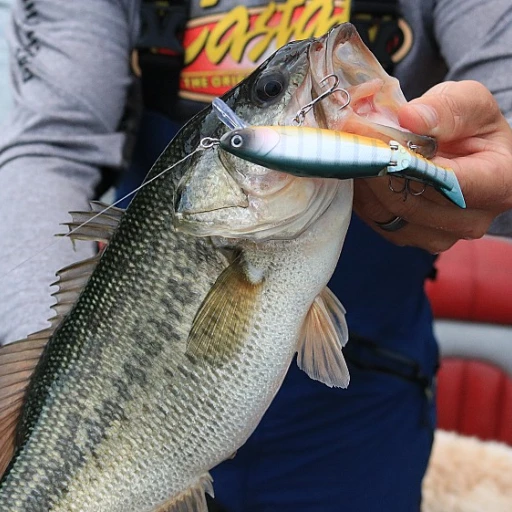
Understanding fish reproductive anatomy
Anatomy of male and female fish
Understanding the reproductive anatomy of fish is like opening a can of worms—no pun intended. Fish, depending on their species, have varying reproductive organs which can indeed be quite fascinating. In general, male fish possess testes, and females have ovaries. But don’t let these simple terms fool you, the diversity goes much deeper.
Male fish typically produce sperm in the testes, and female fish generate eggs in the ovaries. In some species, these organs are located deep within their body, and in others, they may be more externally accessible. For instance, the male guppies, scientifically known as Poecilia reticulata, have a specialized appendage called a gonopodium, which is used to transfer sperm to the female.
Unlike mammals: anatomy and reproduction
Unlike mammals where reproductive organs like the penis and vagina are easily defined and understood, fish reproductive anatomy varies differently. Most fish don't engage in direct sex as humans understand it but employ various strategies for fertilization and development of eggs and sperm. Some fish do fertilize their eggs internally while others do so externally.
Are you curious about how fish get pregnant? It's essential to learn it to fully grasp the fish reproductive anatomy.
Special cases in fish reproduction
According to the Proceedings of the Royal Society, some species like the Phallostethus cuulong found in Vietnam's Mekong Delta possess unique reproductive methods. This particular fish has evolved a very curious anatomical feature—a genital structure at the head region, unlike standard fish anatomy. Extraordinarily enough, male Phallostethus cuulong carry their reproductive organs near their throats, which has puzzled scientists and fascinated ichthyologists, including Dr. Koichi Shibukawa of the Nagao Natural Environment Foundation in Tokyo, Japan.
Each species adds another layer of complexity, like the aquatic soap opera of reproductive tactics. Understanding these differences helps in appreciating the intricate lifestyles aquatic creatures lead and why “do fish have penises?” is a question with a multifaceted answer.
Do fish have penises?
Do fish have penises?
When it comes to understanding whether fish have penises, the answer can be surprisingly complex. Unlike mammals, most fish don't possess an external penis, and their reproductive methods can vary widely across species.
Many male fish fertilize eggs externally. For instance, species like salmon and carp release their sperm into the water where it directly fertilizes the female's released eggs. According to NCBI, this external fertilization is common among many bony fishes.
However, some fish do have specialized reproductive organs. For instance, male sharks, skates, and rays possess claspers, which are modified pelvic fins used to transfer sperm into the female. Claspers are not penises per say, but they serve a similar reproductive function. This fascinating adaptation allows certain species to fertilize eggs internally, ensuring a better chance of reproductive success.
The fish world has some extraordinary examples, such as the rare species Phallostethus cuulong found in Vietnam's Mekong Delta. Male Phallostethus cuulong have a penis-like organ, called a priapium, located under their head. This organ helps them grasp females and fertilize their eggs internally. According to a study published in the Proceedings of the Royal Society B, this unique feature highlights the diverse reproductive strategies among fish.
On the bizarre end of the spectrum, the 'penis fish' or Urechis unicinctus, commonly called the fat innkeeper worm, got its name due to its phallic shape. However, it's not actually a fish and doesn’t function in a reproductive capacity like a true penis. Found in California and the East Asian coastline waters, this creature is often misnamed and misunderstood. Koichi Shibukawa of the Nagao Natural Environment Foundation, Tokyo, Japan, emphasizes that accurate naming and understanding of these organisms is crucial.
Even within more commonly known fish like guppies (Poecilia reticulata), reproductive strategies take unique forms. Guppies possess a gonopodium, a modified anal fin that males use to transfer sperm to females during mating. In many live-bearing fish, including guppies, females give birth to live young rather than laying eggs, a method verified by Live Science.
In sum, while most fish don’t have a penis in the mammalian sense, they have evolved a variety of reproductive strategies and specialized organs that fulfill the same role. Each method, from external fertilization to the modified pelvic fins and claspers, highlights the incredible adaptability and diversity of fish species across our oceans and rivers.
For a deeper dive into the fascinating world of fish anatomy and reproduction, specifically with pelvic fins and how they play a role, you might want to check out this ultimate blackened fish recipe guide.
Unique reproductive strategies in fish
Innovative techniques among fish species
The underwater world holds some surprising truths about fish mating habits, and they can be downright fascinating. You'll be blown away by how inventive these creatures can get when it comes to reproducing. Unlike many animals, fish have evolved a varied array of methods to ensure their genes are passed on to the next generation.
Viviparity and ovoviviparity
Viviparity and ovoviviparity are fancy sciences ways of saying some fish give birth to live young. Imagine that instead of laying eggs, the female carries fertilized eggs within her body until they hatch. It's pretty much a fish version of a live birth. Sharks are notorious for this method, especially species like the Great White. Not every fish sticks to classic egg laying.
Unusual mating rituals of guppies and relatives
Guppies, scientifically known as Poecilia reticulata, have wild strategies for making baby guppies. The males often use their modified fin, called a gonopodium, to transfer sperm directly into the female. It's not about forming lasting bonds as you see in birds; it's quick and efficient. No dinner, no flowers, just straight-up business.
Phallostethus cuulong: a peculiar case
A standout species is Phallostethus cuulong, found in the Vietnam Mekong Delta. These fish have evolved to have their sex organs, including an actual penis called the priapium, located under their head. Koichi Shibukawa from the Nagao Natural Environment Foundation Tokyo, Japan, points out this adaptation allows for a more accurate transfer of sperm, increasing reproductive success in their murky habitats.
The oviparity of fish
Now, most fish are oviparous, which means they lay eggs outside their body—think of how salmon return to their birthplace to lay eggs. This method spreads thousands of eggs, some of which might be fertilized by sperm released into the water by males. No guarantee you'll get a baby fish from each egg; it’s a numbers game and a pretty intriguing one at that.
Internal fertilization
Other species in the aquatic realm have internal fertilization methods, similar to mammals. These fish, such as some sharks and rays, have developed claspers—tools to transfer sperm directly to ensure reproductive success. The good ol’ pelvic fins have another role beyond steering them where they need to go.
So next time you’re pondering the giants of the water while out fishing, remember there's an entire underwater drama unfolding on how these clever fish ensure their line continues!
Case study: Guppies (Poecilia reticulata)
Guppies: A case study in fish reproductive adaptations
Guppies, scientific name Poecilia reticulata, offer a fascinating glimpse into the reproductive adaptations of fish. Native to South America, these small, brightly colored fish are among the most researched species in the world due to their unique reproductive strategies. Male guppies have developed specialized adaptations that make them stand out in the animal kingdom: the presence of the gonopodium, which is an adaptation of the anal fin used to transfer sperm to the female.### Mating behavior and reproductive anatomy In the wild, male guppies display a variety of complex courtship behaviors to attract females and secure a mating opportunity. The male's gonopodium, a modified anal fin, plays a central role here. This organ is used to transfer sperm directly to the female, a rare but not unique feature among fish. Aiming for precision, male guppies often approach females cautiously, trying to avoid aggressive responses.
### Live-bearing reproduction One of the most remarkable features of guppy reproduction is that females are live-bearers. Rather than laying eggs like many other fish species, female guppies give birth to live young. After internal fertilization, the embryos develop within the female's body, and she eventually gives birth to free-swimming juveniles. This reproductive strategy enables embryos to benefit from a protected environment until birth, increasing their chances of survival.
### Sexual dimorphism and selective pressures Sexual dimorphism is pronounced in guppies, with males being smaller and more vibrant in color compared to the larger, more drab-colored females. This difference in appearance is primarily due to sexual selection. According to a study published in the Proceedings of the Royal Society B (DOI: 10.1098/rspb.2018.0613), female guppies prefer brightly colored males, which has driven the evolution of eye-catching coloration and complex courtship displays in males.
### Implications for evolutionary biology The study of guppy reproduction has broader implications for understanding evolutionary biology. Researchers have used guppies to explore fundamental concepts such as natural and sexual selection, predator-prey dynamics, and the genetic basis of evolutionary change. The extensive body of research on guppies continues to shed light on how reproductive strategies evolve in response to environmental pressures.
In summary, guppies exemplify how fish can evolve unique reproductive adaptations to enhance their survivability and reproductive success. From the development of the gonopodium to the practice of live birth, guppies offer valuable insights into the diverse reproductive strategies within the fish world. For more on how reproductive adaptations affect fishing, check out this comprehensive guide to the fishing calendar.
The role of pelvic fins and claspers
The importance of pelvic fins and claspers in fish reproduction
Pelvic fins and their role in fish mating and reproduction can be pretty surprising. These aren't just fins for swimming—they play a major part in how fish, especially various species of male fish, fertilize eggs internally. When we talk about pelvic fins and claspers, we're diving (pun intended) into the unique ways fish reproduce.Pelvic fins as essential mating toolsIn many fish species, pelvic fins are positioned just below the fish's belly and can be highly modified to assist in reproduction. For example, in some species like guppies (Poecilia reticulata), the male's pelvic fins transform into specialized structures called claspers. According to Koichi Shibukawa from the Nagao Natural Environment Foundation in Tokyo, these claspers are critical for the transfer of sperm to the female during mating. Without them, reproductive success in these species would be compromised.Sharks are a prime example of how pelvic fins are vital in fish reproduction. Male sharks have particularly long and fleshy claspers that they insert into the female to internally fertilize her eggs. This unique arrangement allows for greater control during the fertilization process compared to external fertilization, where eggs are laid outside and then fertilized.Phallostethus cuulong: A unique caseA fascinating example is the Phallostethus cuulong, a tiny fish found in the Mekong Delta of Vietnam. This species has a highly specialized reproductive organ situated near the head, which is actually a modified pelvic fin, used for transferring sperm to females. Studies from Can Tho University and Tokyo University have documented this quirky adaptation, shedding light on the diverse evolutionary strategies in the aquatic world. Fun facts:1. Sharks birth live young - Many shark species don't lay eggs but give birth to live young, a process facilitated by internal fertilization using claspers.2. Guppies have unique claspers - Male guppies use their modified pelvic fins to deliver sperm directly to the female's reproductive tract.It's clear that pelvic fins and claspers aren't just for show—they're crucial reproductive organs. Whether it's giving birth to live young or fertilizing eggs internally, these adaptations highlight the incredible diversity of fish reproduction strategies. While controversies do exist over classifications and the evolutionary origins of these structures, experts like Koichi Shibukawa argue that ongoing research will continue to uncover the fascinating secrets of fish reproduction.Notable species: Phallostethus cuulong
Notable species: Phallostethus cuulong
The Phallostethus cuulong is a fascinating species, primarily found in the Mekong Delta region of Vietnam. Its reproductive anatomy sets it apart from most other fish species due to its unique genital structure. Unlike the majority of fish, which lack external sex organs, the males of Phallostethus cuulong possess a specialized reproductive organ known as the priapium.
The priapium is located on the underside of the fish’s head. Yes, you read that right—on the head! This organ resembles a penis and is used during the mating process to transfer sperm directly to the female. Koichi Shibukawa, a researcher at the Nagao Natural Environment Foundation in Tokyo, Japan, has extensively studied this species. He emphasizes that the unique placement of the priapium is an adaptation that helps males successfully fertilize eggs in environments with strong water currents.
The intriguing reproductive roles
In these fish, the priapium includes both the copulatory organ and a series of complex structures used to hold and maneuver the female. According to Shibukawa, “The priapium isn’t just for sperm transfer. It has evolved to aid males in efficiently finding and holding onto females in fast-flowing waters.” This distinctive reproductive anatomy enables Phallostethus cuulong males to effectively court and mate with females, despite their challenging environment in the Mekong Delta.
An interesting study published in the Proceedings of the Royal Society B highlights how the males' priapium plays a crucial role in rapid and secure sperm delivery, increasing their chances of reproductive success. The study found that this unique adaptation is likely an evolutionary response to the species’ specific environmental demands.
A glimpse into evolutionary adaptations
The Phallostethus cuulong showcases how diverse and specialized reproductive strategies can be among fish species. This specialization speaks volumes about the evolutionary pressures that drive unique anatomical adaptations in the animal kingdom. It also raises fascinating questions about the interactions between environment and biology, encouraging further research into other fish with similarly unique reproductive organs.
Curiously, there are other species within the Phallostethidae family that also have priapia. This family of fish is distributed mainly across Southeast Asia, including Vietnam, Thailand, and the Philippines. Their reproductive strategies highlight the diverse methods nature employs to ensure species survival and propagation, making them a subject of continuous study and interest.
Controversies and misconceptions
Dispelling common myths and misconceptions
When it comes to fish, there's a whirlpool of misconceptions about their reproductive anatomy. One prevalent myth is that all fish have the same type of reproductive organs, just like mammals. But the truth is as varied as the fish species themselves.
The phrase “do fish have penises” often leads to more confusion than clarity. While certain fish species, like sharks, have claspers—modified pelvic fins used during mating—most fish do not possess a structure that resembles a mammalian penis. Claspers are present in male sharks and are used to channel sperm into females’ reproductive tracts. According to the NOAA, the shape and size of these claspers can vary significantly, partly due to the diversity of shark species.
Beliefs debunked by experts
Dr. Koichi Shibukawa, from the Nagao Natural Environment Foundation in Tokyo, Japan, explains that the misconception likely stems from oversimplified biology lessons and anthropomorphism—attributing human characteristics to animals. “Fish reproductive organs can range from gonopodium in guppies (Poecilia reticulata) to the more unique sex organs found in Phallostethus cuulong,” he shares. The gonopodium is an anal fin modified for reproductive purposes and is used by male guppies to transfer sperm into the female’s body.
Contrary to another popular belief among some anglers, not all fish fertilize eggs internally. Many fish, in fact, release sperm and eggs into the water, where external fertilization occurs. Fish like the Atlantic salmon, which spawn in freshwater streams, exemplify this external method of reproduction.
Uncommon creatures and unusual names
The “penis fish,” also known as the fat innkeeper worm (Urechis unicinctus), isn't a fish at all but a type of marine worm found mostly in East Asia. Despite its name and appearance, its primary function isn't reproduction but burrowing and living in muddy seabeds. Interestingly, this creature has also inspired misconceptions because of its suggestive shape and biological role.
Another eye-catching example is Phallostethus cuulong, a small fish found in the Mekong Delta in Vietnam. This diminutive species has a reproductive organ located on its head. According to a study published in the Proceedings of the Royal Society B (DOI: 10.1098/rspb.2012.1422), this unconventional positioning allows Phallostethus cuulong to perform complex mating rituals despite its size.
What the future holds
Looking ahead, experts like Dr. Shibukawa stress the continued importance of public education on fish reproductive biology. Misconceptions can lead to misguided conservation efforts and a lack of appreciation for the diversity in marine life. As our knowledge expands with more research, bringing accurate information to the public is crucial. Future research may uncover even more unique reproductive methods, contributing to the rich tapestry of life on Earth.
For more fascinating insights into the incredible world of fish anatomy and behavior, check out our comprehensive guide on fish recipes!
Expert insights and future research
Insights from experts in ichthyology
Diving into the minds of leading experts in ichthyology offers an exceptional understanding of fish reproductive anatomy and behavior. According to Koichi Shibukawa from the Nagao Natural Environment Foundation in Tokyo, Japan, fish reproductive organs and strategies are incredibly diverse, ranging from the internal fertilization seen in fish like guppies to the unique reproductive mechanisms of sharks and other species.
Shibukawa explains, 'Male fish often have specialized organs like gonopodium or claspers, which they use to transfer sperm to females.' This finding is further supported by studies published in the Proceedings of the Royal Society, which show how these adaptations play a crucial role in the reproductive success of various fish species.
Koichi also highlights the fascinating case of Phallostethus cuulong, a species discovered in the Mekong Delta, Vietnam. This tiny fish has what could be described as a 'penis' located under its throat, used for precise sperm transfer. These unique evolutionary quirks illustrate the extraordinary variety within the fish kingdom.
In the words of renowned ichthyologist Michael Noam from Can Tho University, 'It's a mistake to think of fish reproductive organs as either having or not having penises. The reality is far more nuanced and interesting.' For instance, the role of pelvic fins and claspers in species like sharks underlines the diversity of reproductive strategies across aquatic life.
Interesting studies, like those from Live Science, add to this detailed picture. Research on the fat innkeeper worm (Urechis unicinctus), commonly referred to as 'penis fish,' shows another layer of nature’s ingenuity. These ‘worms’ play essential roles in their ecosystems, despite their humorous appearance.
For future research, experts like Shibukawa and Noam suggest a deeper dive into the lesser-known species and their reproductive strategies. Such investigations could reveal even more about the adaptability and evolution of fish reproductive systems, providing insights that might challenge existing misconceptions.
The field remains rich for exploration, and as ichthyologists continue to unravel these mysteries, our understanding of aquatic life and its complexities will only deepen. Whether it's through examining the role of pelvic fins or studying unique species like the Phallostethus cuulong, the journey to understanding fish reproductive strategies is far from over and promises exciting discoveries ahead.






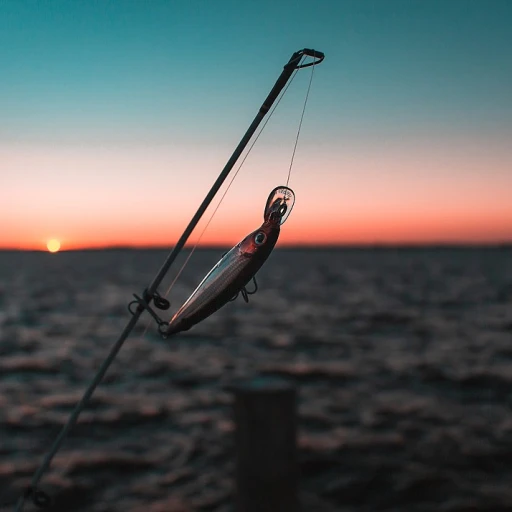
-large-teaser.webp)


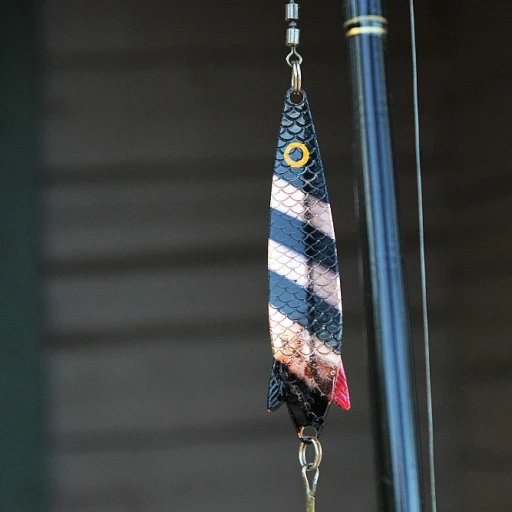
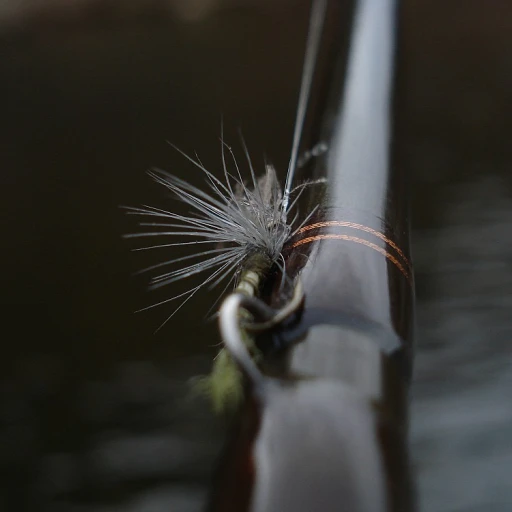
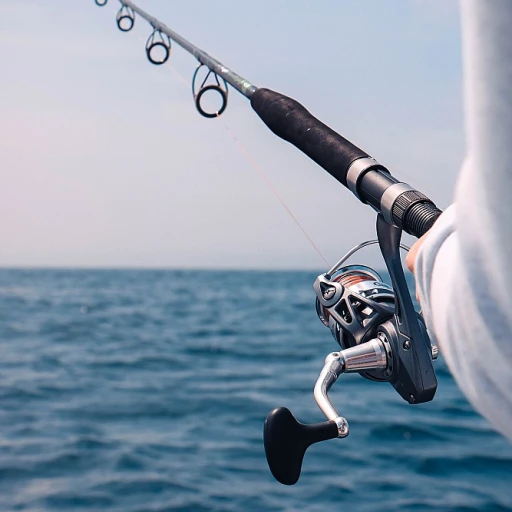
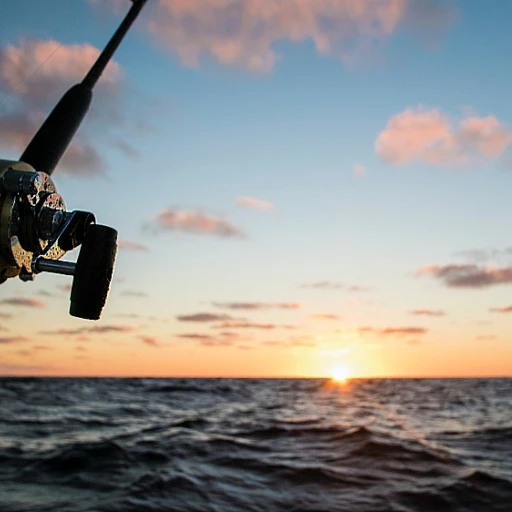
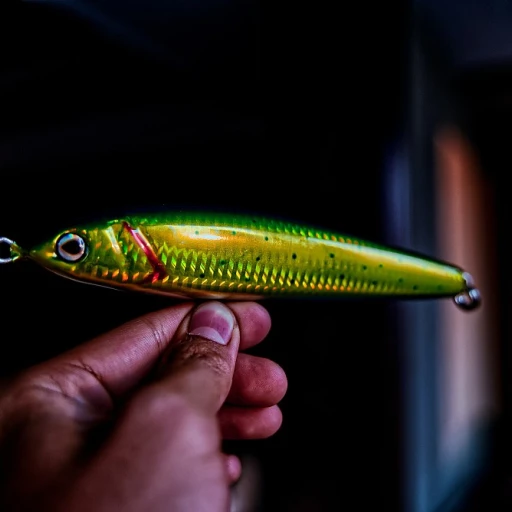
-large-teaser.webp)
